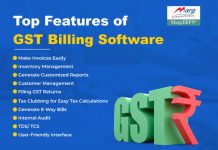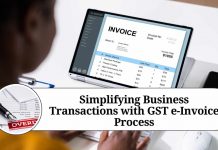Before we dive into the accounting entries, it’s important to understand the different types of GST that businesses need to deal with:
- CGST: Central Goods and Services Tax
- SGST: State Goods and Services Tax
- IGST: Integrated Goods and Services Tax
CGST and SGST are applicable for intra-state transactions, i.e., transactions that happen within the same state. IGST is applicable for inter-state transactions, i.e., transactions that happen between two different states.
Now, let’s look at the accounting entries that businesses need to make for different types of transactions:
- Sales: When a business makes a sale, it needs to charge GST on the value of the goods or services sold. The accounting entry for a sale would be as follows:
Debit: Bank Account/Sales Account Credit: CGST Account Credit: SGST Account or Credit: IGST Account
The CGST, SGST or IGST accounts will be credited based on the type of transaction.
- Purchases: When a business makes a purchase, it may have to pay GST on the value of the goods or services purchased. The accounting entry for a purchase would be as follows:
Debit: Purchase Account Debit: CGST Account Debit: SGST Account or Debit: IGST Account Credit: Bank Account
the CGST, SGST or IGST accounts will be debited based on the type of transaction.
- Input Tax Credit (ITC): When a business pays GST on its purchases, it can claim the GST paid as Input Tax Credit (ITC) and use it to offset the GST payable on its sales. The accounting entry for ITC would be as follows:
Debit: CGST Account Debit: SGST Account or Debit: IGST Account Credit: Input Tax Credit Account
The Input Tax Credit Account will be credited with the amount of ITC claimed.
- GST Payable: When a business makes a sale, it needs to pay GST on the value of the goods or services sold. The accounting entry for GST payable would be as follows:
Debit: CGST Account Debit: SGST Account or Debit: IGST Account Credit: GST Payable Account
The GST Payable Account will be credited with the amount of GST payable.
-
GST Receivable: When a business makes a purchase, it may be entitled to receive GST from its supplier. The accounting entry for GST receivable would be as follows:
Debit: GST Receivable Account Credit: CGST Account Credit: SGST Account or Credit: IGST Account
The CGST, SGST or IGST accounts will be credited based on the type of transaction.
- Reverse Charge Mechanism: In some cases, the liability to pay GST may be shifted from the supplier to the recipient of goods or services. This is known as the reverse charge mechanism. The accounting entry for reverse charge mechanism would be as follows:
Debit: Expense Account Credit: CGST Account Credit: SGST Account or Credit: IGST Account
The CGST, SGST or IGST accounts will be credited based on the type of transaction. It is important to note that the recipient of goods or services needs to maintain a separate account for reverse charge mechanism.
- Refunds: Sometimes, businesses may be eligible for a refund of the GST paid on their purchases. The accounting entry for a refund would be as follows:
Debit: Input Tax Credit Account Credit: Bank Account
The Input Tax Credit Account will be debited with the amount of refund received.
- Adjustments: In some cases, adjustments may need to be made to the GST liability. For example, if the value of the goods or services sold is reduced, the GST liability will also be reduced. The accounting entry for an adjustment would be as follows:
Debit: CGST Account Debit: SGST Account or Debit: IGST Account Credit: Sales Account
The Sales Account will be credited with the amount of adjustment made.
- Interest and Penalties: If a business fails to pay GST on time, it may be liable to pay interest and penalties. The accounting entry for interest and penalties would be as follows:
Debit: Interest or Penalty Account Credit: Bank Account
The Interest or Penalty Account will be debited with the amount of interest or penalty paid.
Other Related Blogs: Section 144B Income Tax Act
Frequently Asked Questions (FAQs)
Q.What is GST accounting?
GST accounting involves maintaining accurate records of all GST transactions made by a business, including purchases, sales, input tax credit, GST payable, GST receivable, and refunds. This helps businesses calculate their GST liability and ensure compliance with GST regulations.
Q.What are the different types of GST accounting entries?
The different types of GST accounting entries include sales, purchases, input tax credit, GST payable, GST receivable, reverse charge mechanism, refunds, adjustments, and interest and penalties.
Q.Why is it important to maintain accurate GST accounting records?
Maintaining accurate GST accounting records helps businesses calculate their GST liability accurately and ensure compliance with GST regulations. It also helps businesses claim input tax credit and avoid penalties and legal action.
Q.What software can businesses use for GST accounting?
There are many software options available for GST accounting, including Tally, QuickBooks, and Zoho Books, to name a few. It is important for businesses to choose a software that is easy to use and meets their accounting needs.
Q.Can businesses claim input tax credit on all purchases?
Businesses can claim input tax credit on all purchases made for the purpose of business, except for certain items such as motor vehicles and food and beverages.
Q.What happens if a business fails to comply with GST regulations?
If a business fails to comply with GST regulations, it may be liable to pay penalties and legal action. It is important for businesses to seek the advice of a qualified accountant and ensure compliance with GST regulations to avoid any legal issues.

































